Our customers struggle to obtain effective technical answers using generic LLM and AU tools, as the responses were too broad and failed to address their specific issues. With our solution, we helped them ingest their data into LitenAI. Leveraging LitenAI AI Agentic flow, customers can now resolve issues in a targeted and efficient manner. LitenAI learns from existing knowledge to deliver precise, tailored answers using all data that meet their unique needs.
LitenAI is available now on demand. Please contact us to try it out now.
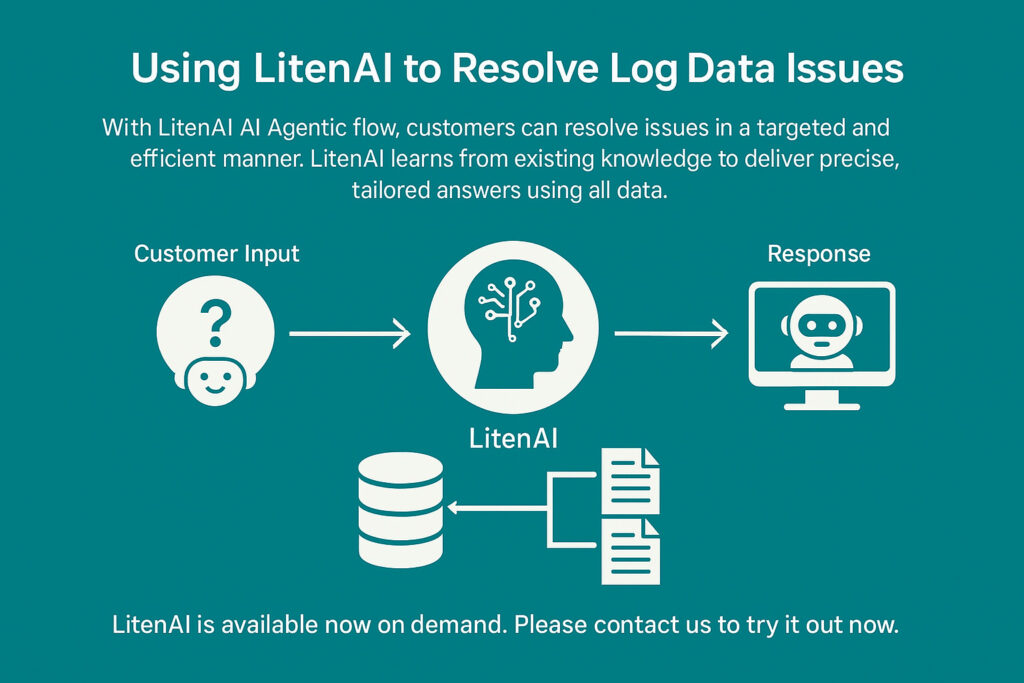
Here are some general steps to follow for resolving issues. Please note that this is a guideline script. LitenAI is a fully conversational agent and will respond to your prompts. While prompting, you may need to clarify the task that needs to be performed. In this Agentic flow, LitenAI accesses the necessary agents to perform the tasks and completes them. The system includes a combination of AI, a big data semantic engine, and a structural SQL query engine. For the following prompts, select logreason smart lake.
See a summary sheet below. Scroll down to see the prompts and expected response. Scroll further down below for lake tab settings.
Reasoning using LitenAI Agents
The Reasoning Agent is a top-level flow that plans and calls LitenAI agents to resolve customer questions. The LitenAI planner defines the flow, and each agent’s execution determines the next step until resolution.
For example, we can ask it to resolve an internal status error like this.
Reason out the internal status errors like 5xx in imapserverlog table. Analyze it for one most likely cause and give a resolution.
LitenAI first generates a plan as shown below.

The code generator agent creates accurate code by leveraging the smart lake and big data platform, which provide all necessary information for precision.
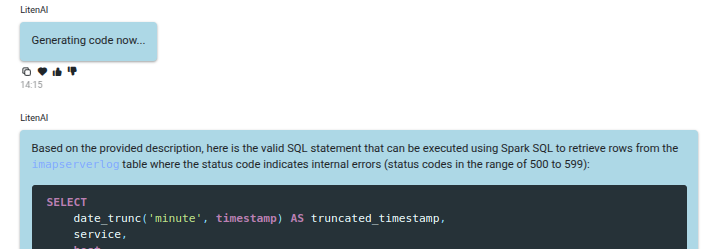
The code is executed on the LitenAI big data platform for interactive responses. LitenAI enhances query performance with tensorized data storage and an accelerator library.
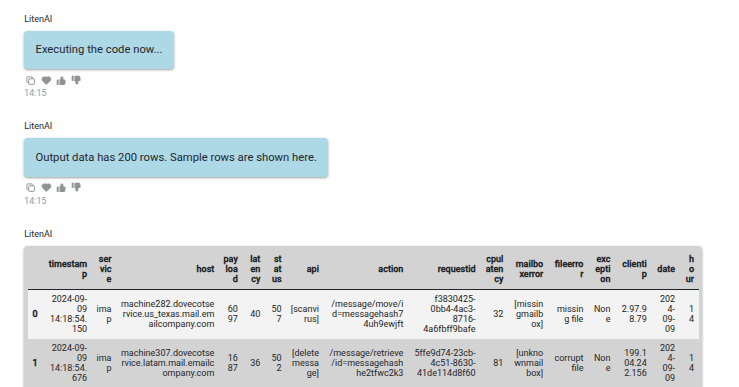
Next, it performs an analysis to produce a final resolution.

LitenAI Agents
LitenAI agents are activated based on user prompts, enabling users to analyze data and explore specific areas of interest effectively.
Search Agents
We can first search through the open tickets and identify available engineers within the company using LitenAI’s search agents. See sample scripts below:
Search for the open tickets from tickets table.

There is a critical open ticket that needs attention. If necessary, we can use semantic search to identify available engineers and determine if the ticket should be assigned to them.
Can you search for an engineer with expertise to solve latency issues causing service disruptions from engineers table?
The system provides a list of engineers. Customers can either reassign tasks or request assistance from an engineer. Below is a sample chat illustrating how customers can perform these tasks.
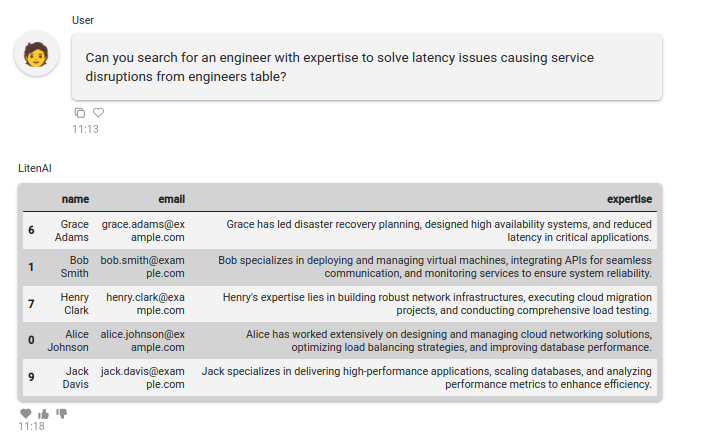
Planning Agent
An engineer can request a plan to identify the root cause of latency issues in the email service.
Can you tell me how to root cause high latency values? Latency is measured by timestamp difference from imapserverlog to webaccesslog table. For now, provide high level direction without any code.
An engineer can request a plan to identify the root cause of latency issues in the email service. LitenAI analyzes customer flow and service logs to provide insights. Below is a sample chat demonstrating how an engineer can retrieve relevant data by joining tables.
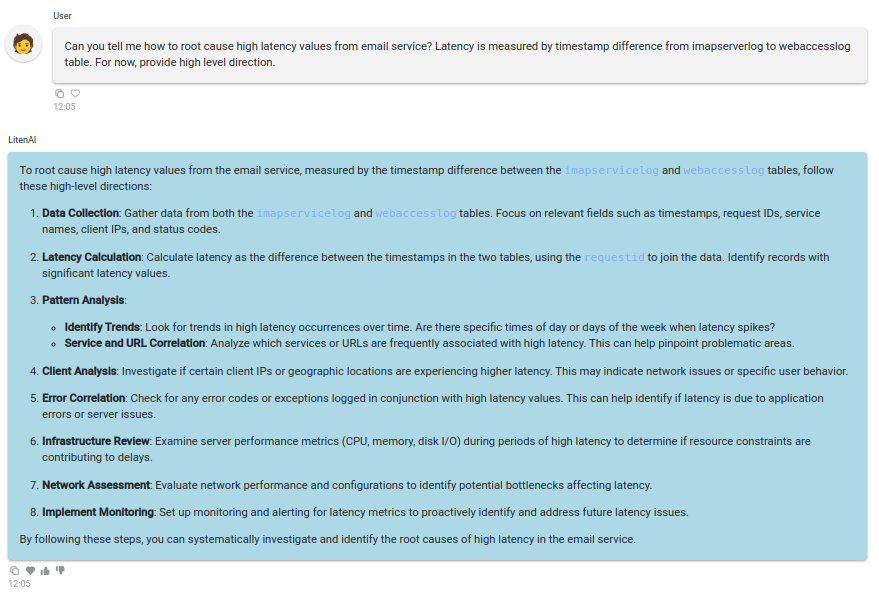
Query and Execution Agents
Give me a plan to debug latency. latency is measured as timestamp difference from imapserverlog to webaccesslog table. These tables are joined by requestid fields. Pick the field names provided in the prompts. In the SQL, keep all the fields of both the tables in the output with names prepended with table abbreviations. Show 500 highest latency values. Execute the generated SQL.
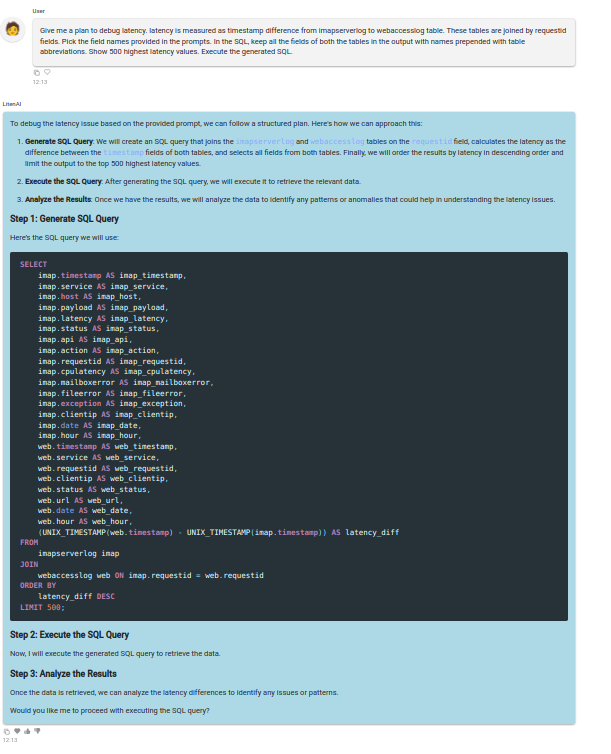
After execution, the data can be reviewed. If needed you can confirm to execute the generated code like.
Execute the generated SQL.
This is executed on the big data cluster with accelerated Spark cluster. Sample dataset outputs are printed out as well.
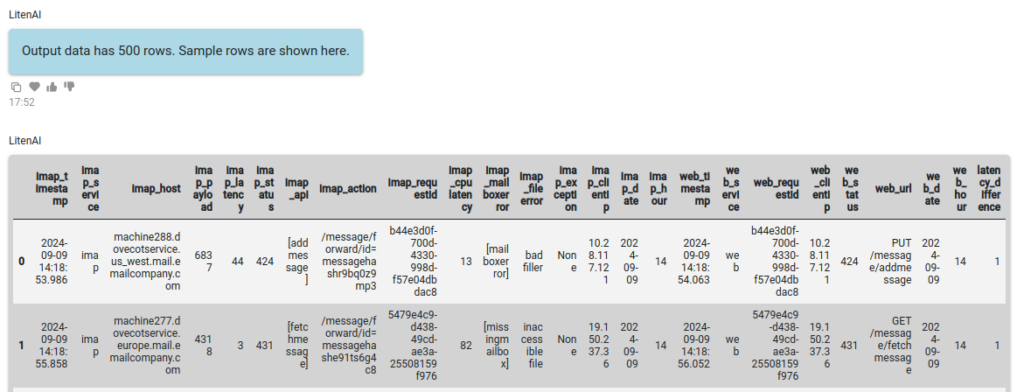
Visualization Agent
Various plots can be created to visualize and interpret the information, which can also be shared if needed.
Plot the data.
The explorer plot can be seen below.

Analyze Agents
User can now ask for possible latency causes to understand if status codes could be an issue.
Can you analyze the possible causes of high latency focusing on status codes?
LitenAI reviews documents and data to identify potential causes.
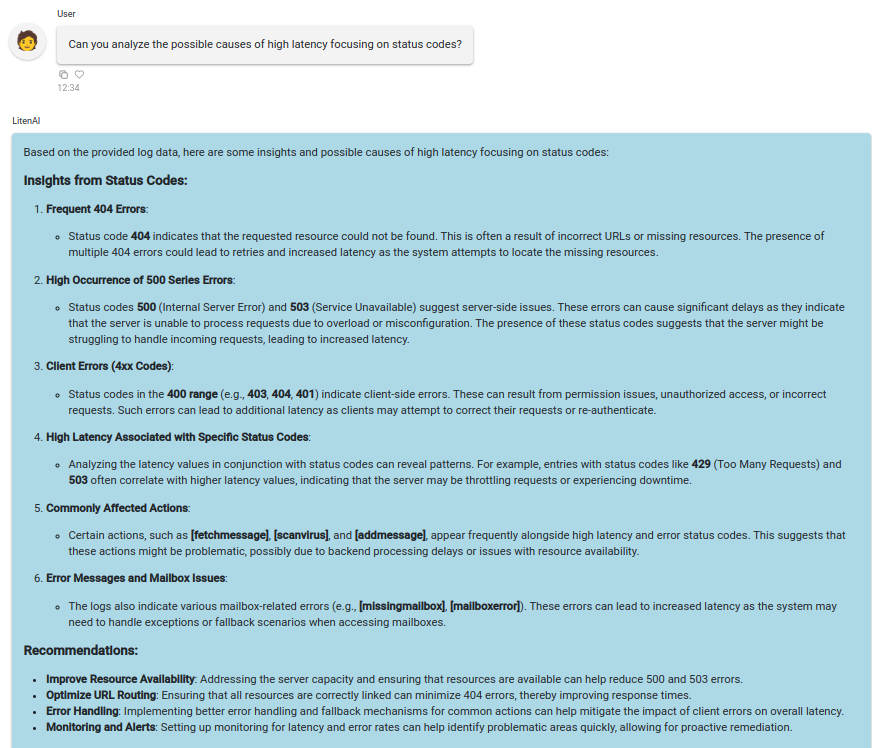
Analyze to select one status code primarily responsible for latency degradation. Provide a resolution.
We can analyze specific causes to understand their impact on the service. By leveraging knowledge documents and historical data, LitenAI identifies the relevant code and suggests possible resolutions.

503 service not available is an issue here. LitenAI Engineer provides possible resolutions to the problem. Customers can chat with LitenAI Engineer to explore and drill down more into specific issues.
Smart Lake
In the LitenAI Smart Lake, the customer ingested their knowledge documents and established connections to their required databases. All data is securely stored within the customer’s storage. Customers can ingest data using various methods, either programmatically from stored files or through streams for continuous ingestion. Additionally, data can be uploaded and managed through Lake Agents, either via chat or using the Lake GUI interface to populate the lake. If you are going through these prompts, make sure to select logreason data lake. Select lake tab and ensure that logreason lake is selected. See a screen shot below.
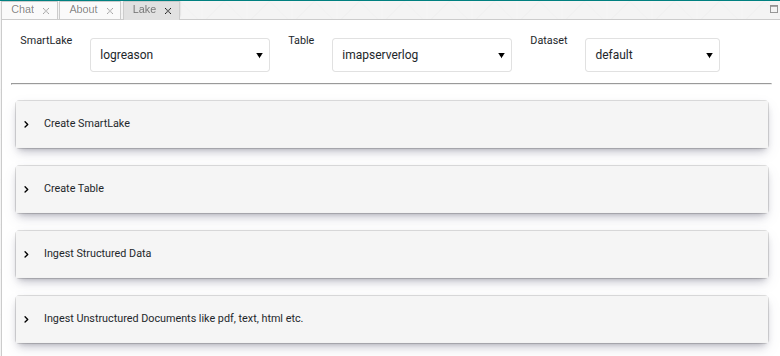
We presented a sample session demonstrating how LitenAI can resolve customer issues. Our service is now available on the cloud. Please contact us to get started, we value your feedback and look forward to helping resolve your challenges.
